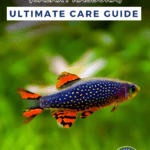The Celestial Pearl danio is known by many different names, including the Galaxy rasbora and Fireworks rasbora.
These beautiful little fish can make an excellent addition to any peaceful, tropical community setup with a few suitable tank mates.
But what’s the correct tank size and water temperature for these fish? Can you breed them in your home tank? And how can you tell a female Galaxy rasbora from a male?
To learn how to care for these beautiful fish, including guidance on feeding, the correct size aquarium for them, and much more, read this comprehensive guide!
Celestial Pearl Danio – At A Glance
Common Name (species)
Celestial Pearl Danio, Galaxy Rasbora, Danio margaritatus
Family
Cyprinidae
Origin
Hopong, Myanmar
Diet
Omnivores: Tropical fish flakes, mini-pellets, frozen meaty foods
Care Level
Beginner-friendly
Activity
Schooling species but can be shy if kept in low numbers
Lifespan
to 5 years
Temperament
Peaceful community fish
Tank Level
All areas, but prefer the middle water column
Minimum Tank Size
10 gallons
Temperature Range
65° to 80° F
Water Hardness
dGH 1-5
pH Range
6.5 to 7.5
Filtration/Flow Rate
Prefers well-filtered water with a low flow rate
Breeding
Egg scatterer
Compatibility
Compatible with other small, peaceful fish and invertebrates. Don’t keep with large, predatory species
OK, for Planted Tanks?
Yes. Likes a densely planted tank.
Origins
Galaxy rasboras are only found in one highly localized area close to Hopong city in Burma.
In the wild, the fish are rapidly decreasing in number, largely because of habitat destruction and overfishing that occurred when they were first discovered in 2006. In fact, at that time, it was thought that the species had gone extinct.
Fortunately, the Myanmar government was alert to the potential disaster and banned the collection and export of wild Galaxy rasboras. Thanks to that and the rasboras’ prolific breeding habit, the crisis was averted.
Today, all Celestial Pearl danios offered for sale in pet stores are captive-bred. If you fancy taking on a breeding project, you can breed these fish relatively easily in your home aquarium.
Appearance
The Galaxy rasbora has to be one of the coolest freshwater fish in the hobby!
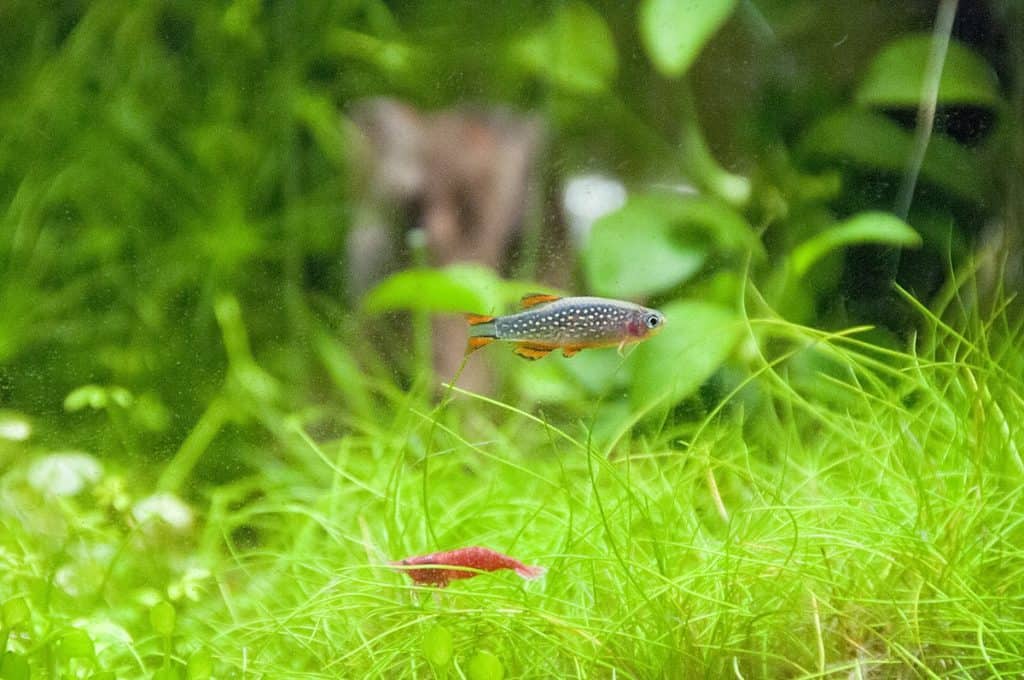
Males are usually more vibrantly colored than females, having a bright blue body covered with a sprinkling of pearly white spots and bright orange markings on the fins. Females are duller in color and lack the color on their fins.
During the breeding season, male fish develop bright crimson underbellies and darker bodies so that their pearly spots are more highlighted. Female fish have a black anal spot when in spawning condition.
When you buy your danios, you’ll most likely take home juvenile specimens with a striped pattern that eventually morphs into pearly, spotted adult colors. That’s fine, as long as you don’t want to establish a breeding program and you need to know what sex your fish are!
How Big Do Celestial Pearl Danios Grow?
These danios grow to measure between 1 and 1.5 inches long.
Behavior
Celestial Pearl danios are shy shoalers that must be kept in groups of at least six individuals. The fish are quite skittish, often preferring to hide away in dense clumps of aquatic plants or caves, usually to avoid bright lights or escape curious tank mates.
The fish enjoy cruising around the central area of the water column, venturing to the surface, or checking out the substrate occasionally, usually sticking together in a shoal.
Schooling Fish
These rasboras are typical schooling fish, preferring to live in groups of at least six. In fact, the more you keep, the better the display you’ll get, especially when their colors become more vibrant during spawning.
Tank Mates
Celestial Pearl danios are peaceful, sociable fish that can live in a community setting with other fish of a similar temperament and size.
Larger, semi-aggressive species are best avoided, as they could make a meal of the danios. In addition, Celestial Pearl danios are easily intimidated by bossy fish, becoming stressed and withdrawn, which can lead to disease outbreaks.
Good tank mates for Celestial Pearl danios include Endler’s livebearers and most of the smaller nano fish species. Shrimp and snails can also make an interesting addition to a tank with danios, and they also make a helpful cleanup crew, eating algae, leftover fish food, and general detritus from around the tank bottom.
Can Pearl Danios Live With Betta Fish?
Although you can sometimes keep Celestial Pearl danios with bettas, that depends on the betta’s personality.
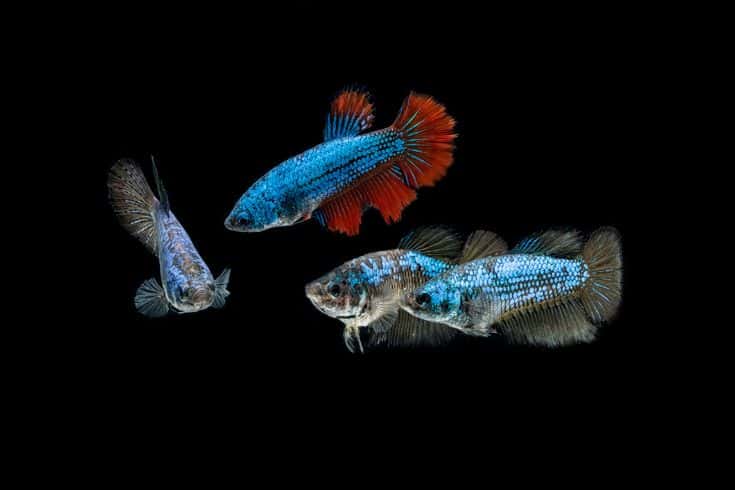
Sometimes, the danio’s bright colors can trigger aggression in a particularly feisty betta fish. However, you can usually include danios with a chilled-out male betta or a female betta sorority
Diet and Nutrition
Wild Celestial Pearl danios are omnivores, eating insect larvae, small invertebrates, some plant matter, and algae.
It’s important to replicate that diet in the home aquarium to keep the fish happy and healthy.
We recommend feeding your danios a mix of high-quality tropical flakes or micro-pellets, together with frozen meaty foods, such as bloodworms, brine shrimp, and mosquito larvae.
How Often Should You Feed Celestial Pearl Danios?
We recommend that you offer your danios enough food that they will eat in a couple of minutes, twice daily.
Celestial Pearl Danio Care Guide
This section of our guide explains how to care for Celestial Pearl danios.
Tank Size
These are small fish that are suitable for nano tanks or a 10-gallon aquarium.
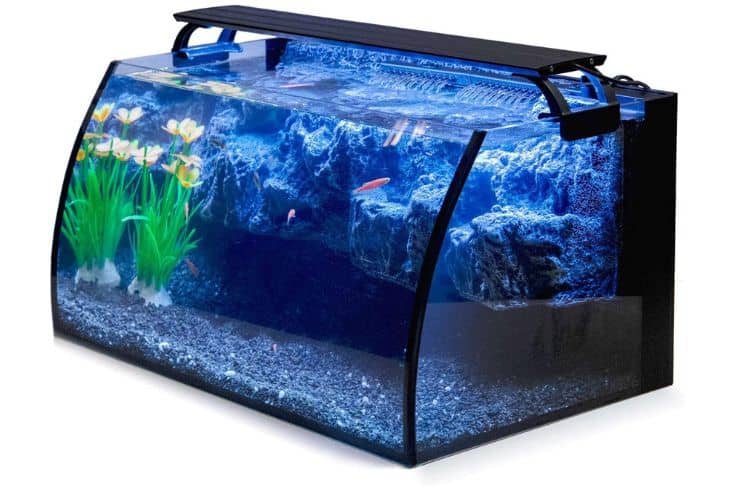
As previously mentioned, these fish are a schooling species that like to spend their time cruising around the middle of the water column. For that reason, a rectangular tank is the best choice.
Tank Setup
When setting up your danio tank, try to replicate the fish’s wild environment as closely as possible. That keeps stress levels low and should help to guard against outbreaks of disease.
Substrate
I prefer to use a dark substrate for Celestial Pearl danios because that shows off the fish’s colors to the max.
Decoration
Be sure to include lots of driftwood and smooth pebbles in your setup, as well as lots of dense aquarium plants.
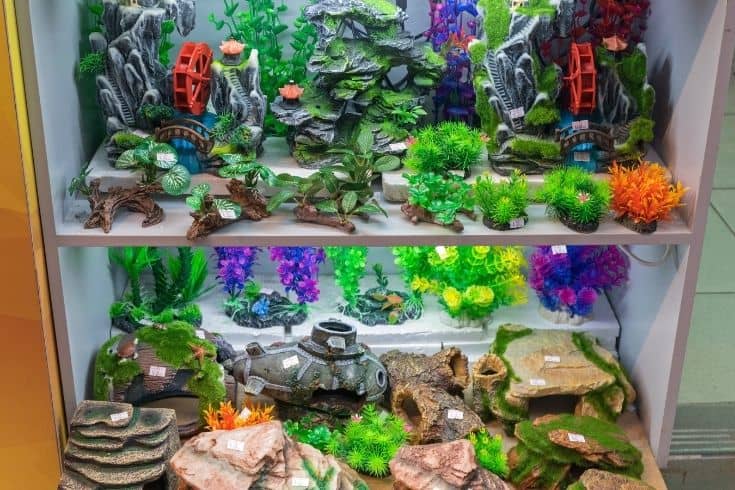
These are shy fish that can easily get stressed, so they appreciate plenty of places to hide away when they want to. Hardscaping, including caves and rocky overhangs, can be a good way to achieve that.
Plants
As mentioned above, lots of thick plants are essential in the danios’ environment.
Dense clumps of plants offer shelter for fish and fry, making them feel safer and more secure, and help to keep stress at bay.
Setting Up Your Tank
First of all, gather together everything you’ll need:
- Filtration system
- Heater
- Aquarium thermometer
- Lighting unit
- Substrate
- Pebbles, rocks, driftwood
- Plants
Now you can set up your tank.
- Rinse the substrate under running water to remove any dust and debris. Add a couple of inches of the substrate to your tank.
- Add the filter unit and heater, but don’t switch them on yet.
- Fill the tank with dechlorinated tap water, allowing space for water displacement when you add plants, decor, etc. You can avoid displacing the substrate by pouring the water over an upside-down plate.
- Rinse your decorations and put them into the tank.
- Add your chosen plants, removing any dead or damaged leaves and stems first.
- Turn on the filter and heater, and cycle the tank before you add your danios.
- Before adding your fish, be sure to test the water to make ensure ammonia and nitrites are zero and nitrates are below 20 ppm (parts per million)
Habitat Requirements
Filtration
Wild populations of Galaxy rasboras live in clean, freshwater ponds supplied by underground springs and seeping groundwater. So, your filter system must keep the water clean and free from ammonia, nitrites, and nitrate.
There’s little flow in the natural habitat where the fish live, so you need to buffer any current from your filtration system, and you won’t need an air stone.
Water Parameters
Galaxy rasboras are easy to keep, provided the water parameters remain constant.
Water Temperature
In their natural habitat, Celestial Pearl danios can cope with water temperatures from 65° to 80° F, although the ideal temperature for these fish is around 75° F.
Danios can be sensitive to temperature shock, so be sure to keep the temperature stable and use a digital aquarium thermometer to check the water temperature daily.
Water Chemistry
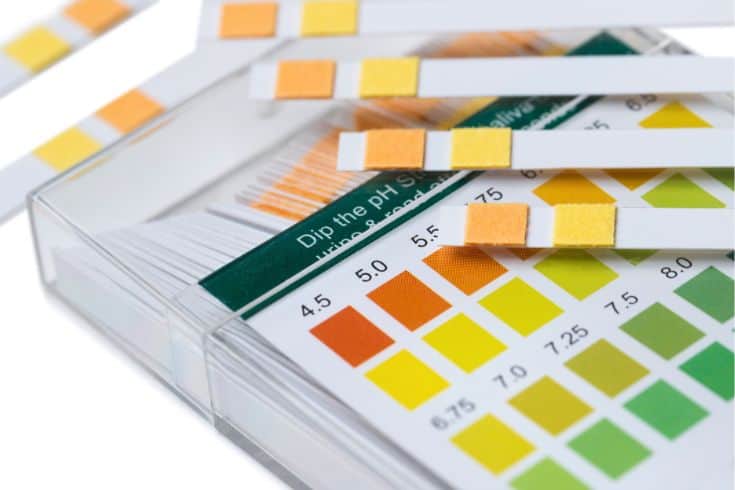
The pH range should be 6.5 to 7.5, with a water hardness between 1 and 5 dGH.
Lighting
Celestial Pearl danios prefer medium to low lighting levels, and they will hide if the lighting in the tank is too bright.
Tank Maintenance
Most fish kills in domestic aquariums are down to poor tank maintenance, stress, and incorrect feeding.
So, each week you should carry out a partial water change of around 20%, remove organic waste from the tank with an aquarium vacuum cleaner, and tidy up your aquarium plants.
Health And Disease
Galaxy rasboras are generally healthy creatures, although, like most tropical fish, they can be attacked by a few common diseases.
Signs Of Good Health

Healthy Galaxy rasboras are generally active fish that school around the middle of the water column. Sometimes, the fish will take shelter in plants, caves, and behind decorations.
Your fish should feed enthusiastically, and their colors should be vivid and bright.
Celestial Pearl danios typically live for three to five years.
Red Flags
Lethargy, loss of appetite, failure to shoal, spending time alone, or fading colors are signs of trouble brewing in Celestial Pearl danios.
Common Health Issues And Treatment
Health Issue
Ich (White Spot Disease)
Symptoms or Causes
Ich is a very common disease that’s caused by an aquatic protozoan parasite.
Fish infected with Ich develop a sprinkling of tiny white spots on their fins, gill covers, and bodies. They also flash against the gravel and other solid objects in the aquarium.
Suggested Action
Raise the water temperature to 82o F for three days. Use an OTC White Spot Disease medication to treat the tank.
Health Issue
Flukes
Symptoms or Causes
Flukes is the term used to describe various types of external fish parasites. These macroparasites can often be seen with the naked eye attached to the fish’s skin or gills.
Suggested Action
Treat the fish tank with an OTC antiparasitic medication.
Health Issue
Fungal infections
Symptoms or Causes
White fluffy growths on the fish’s body, mouth, and head.
Suggested Action
Quarantine infected fish, and treat with an antifungal medication.
Health Issue
Bacterial infections
Symptoms or Causes
Sores and ulcers on the body and head, ragged, bloody fins.
Suggested Action
Treat the tank with OTC antibacterial treatment.
Breeding
You can breed Galaxy rasboras pretty easily in your home aquarium, which is great news for you if you fancy taking on a fish breeding project!
If you keep the fish in a species-only aquarium, the chances are the fish will spawn naturally with no input from you. The main problem with that approach is that adults usually make a meal out of any eggs and fish fry that are produced.
Spawning Tank
The easiest way to avoid that problem is to use a dedicated spawning tank, removing the adult fish once they have spawned.
Your spawning tank needs to contain lots of plants and spawning mops where the females can deposit their eggs. The free-swimming fry hatches within 28 to 36 hours and can be fed finely crushed flakes, micro-worms, and baby brine shrimp.
Once the fry is large enough, you can feed them larger foods.
Availability
The best place to buy Celestial Pearl danios is from a reputable fish store or online. These fish are usually priced at a few dollars each, and you can often get good deals if you buy a group of them.
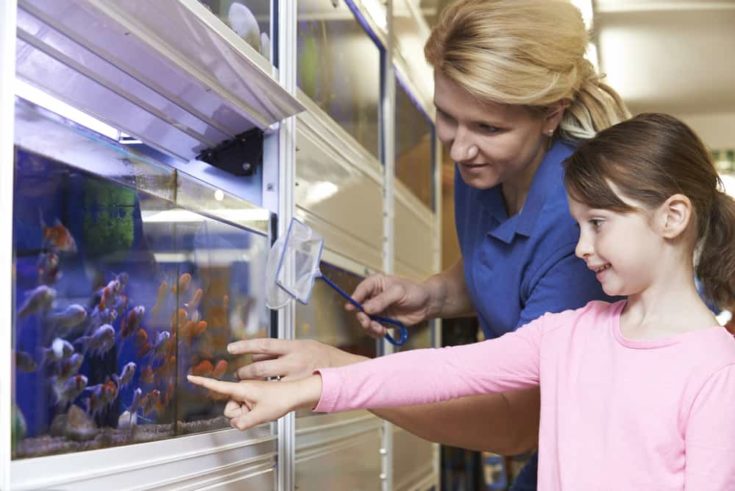
Product Recommendations
If you want to set up a Celestial Pearl Danio tank, you’ll need the following products:
- Aquarium (minimum size 10 gallons)
- Filter system
- Heater
- Dechlorinator
- Lighting unit
- Tropical flake food
- Selection of frozen foods
- Dark-colored substrate
- Rocks, driftwood, caves, etc
- Fishkeeping books
- Fish net
- Aquarium thermometer
- Aquarium vacuum cleaner
- Algae magnet
FAQs
In this section of our guide, we answer some of the most commonly asked questions about caring for Celestial Pearl danios.
Q: How many Celestial Pearl danios should be kept together?
A: These are schooling fish that do better when kept in groups of at least six, although we recommend more if you have the space in your tank.
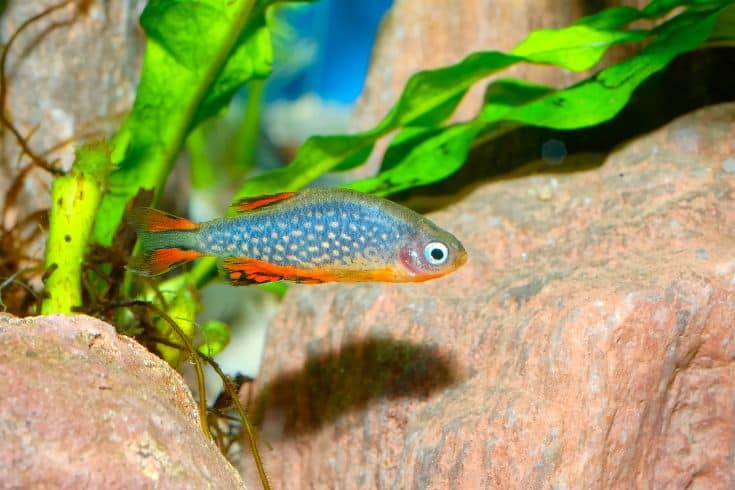
Q: How many Celestial Pearl danios in a 10-gallon tank?
A: You can keep five or six Celestial Pearl danios in a 10-gallon tank.
Q: How many Celestial Pearl danios in a 20-gallon tank?
A: You can keep up to ten to 15 Celestial Pearl danios in a 20-gallon tank.
Final Thoughts
I hope you enjoyed our guide to the beautiful Celestial Pearl danio. If you did, please share the article with other fish fans!
Celestial Pearl danios are dainty little fish that can do well when kept in groups of six or more in a well-planted community tank with plenty of hiding places and open swimming space.
These gorgeous, beginner-friendly fish are quite easy to breed in your home fish tank, too. And given that the species is currently listed on the IUCN Red List as endangered, you could be helping them out massively!
Do you have Galaxy rasboras in your collection? Tell us about your fish in the comments box below!
